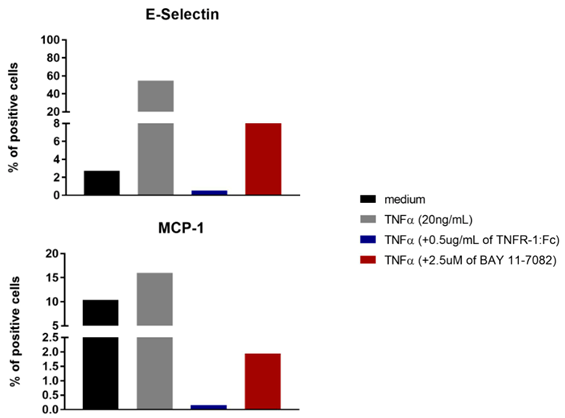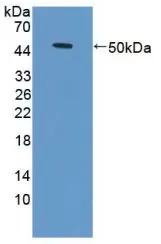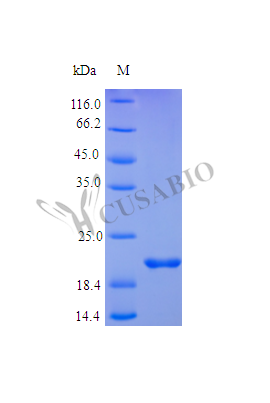
Inhibition of TNFalpha-induced genes by TNF-R1 (human):Fc (human) (rec.) (AG-40B-0074). Methods: Endothelial cells (HUVEC) are incubated for 1h in the presence of BAY 11-7082 (AG-CR1-0013) and then treated with TNFalpha (AG-40B-0006) (20ng/ml)
TNF-R1 (human):Fc (human) (rec.)
AG-40B-0074
Protein IDP19438
Product group Proteins / Signaling Molecules
Overview
- SupplierAdipoGen Life Sciences
- Product NameTNF-R1 (human):Fc (human) (rec.)
- Delivery Days Customer10
- CertificationResearch Use Only
- Concentration1 mg/ml
- Estimated Purity>95%
- Protein IDP19438
- Protein NameTumor necrosis factor receptor superfamily member 1A
- Scientific DescriptionProtein. The extracellular domain of human TNF-R1 (aa 22-211) is fused to the Fc portion of human IgG1. Source: HEK 293 cells. Endotoxin content: 95% (SDS-PAGE). TNF-R1 is a receptor for TNF-alpha and homotrimeric lymphotoxin-alpha. The adapter molecule FADD recruits caspase-8 to the activated receptor. The resulting death-inducing signaling complex (DISC) performs caspase-8 proteolytic activation which initiates the subsequent cascade of caspases (aspartate-specific cysteine proteases) mediating apoptosis. - TNF-R1 is a receptor for TNF-alpha and homotrimeric lymphotoxin-alpha. The adapter molecule FADD recruits caspase-8 to the activated receptor. The resulting death-inducing signaling complex (DISC) performs caspase-8 proteolytic activation which initiates the subsequent cascade of caspases (aspartate-specific cysteine proteases) mediating apoptosis.
- Storage Instruction-20°C,2°C to 8°C
- UNSPSC12352202




